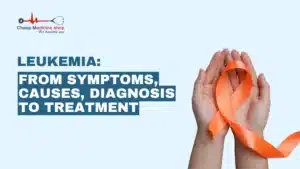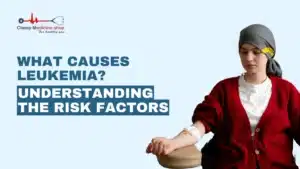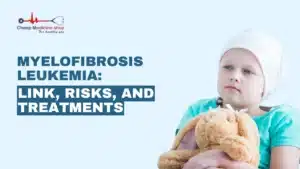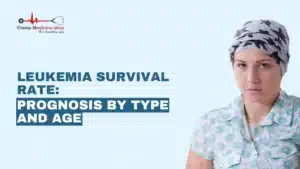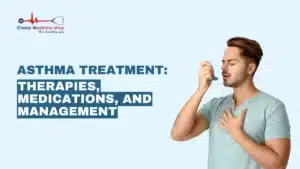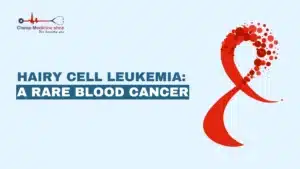A stroke occurs when there is a sudden interruption in the blood vessel that carries oxygen and nutrients. These interruptions can be either by a clot or ruptures. In case of such disruption, blood and oxygen supply stops in the part of the brain, causing the brain cells to die.
In the United States of America, stroke has become the leading cause of disabilities and the fifth most significant cause of death.
Have a look at the following statistics:
- 1 in every 20 deaths in America is due to stroke, i.e., approximately 140,000 individuals.
- Every 440 seconds, someone gets a stroke, and every 4 minutes, someone is dying out of stroke in America.
- Over 795000 individuals have a stroke in America, as per an annual survey. Out of which, approximately 610000 are new strokes.
- About 1 in every four individuals are the people with previous stroke records.
- About 87% of the strokes individuals experience are ischemic strokes.
- People spend approximately $34 billion every year on strokes. This total expense covers the cost of medicines, treatments, and the days of work people miss due to the disease.
Warning Signs Of Stroke
If you are suspicious that someone in your surroundings could have a stroke, you need to act fast. F.A.S.T will help you recognize the warning signs of a stroke.
- Face Drooping: Ask the person to smile. Check if one side of the face is drooping or has become insensitive. You can recognize it by an uneven smile.
- Arm Weakness: You need to check if one arm of the person is drifting downwards. Ask him to lift his arms and enquire.
- Speech Difficulty: A person having a stroke may face speech problems. Ask him to speak something or tell him to repeat a sentence after you.
- Time to call 911: If you notice any of the above-listed symptoms in the person, dial 911 and take him to a doctor without delay.
In addition to F.A.S.T, there are some other warning signs that you need to be aware of. Let us discuss them in brief –
- Abrupt weakness in one part of the body primarily arm, leg or face
- Trouble in speaking or understanding anything
- Walking trouble
- Sudden dizziness
- Serious headache
- Lack of balance and coordination
- Loss of vision, especially in one eye.
Also Read: Everything You Need To Know About Stroke!
Types Of Stroke
Strokes are of three main types:
- Ischemic Stroke
- Hemorrhagic Stroke
- Transient Ischemic Attacks
- Here’s a brief description of each of them:
Ischemic Stroke
When arteries to your brain get blocked or narrowed, ischemic strokes occur. It results in decreased blood flow in the concerned part of the brain. Researchers have discovered that almost 80% of strokes are ischemic strokes.
Ischemic strokes further classified into two categories:
- Thrombotic Stroke: In this type, the artery carrying blood and oxygen to a part of the brain gets blocked. As a result, blood stops flowing to the concerned part of the brain. The reason for blocking arteries is the formation of a thrombus(blood clot) in it. The thrombus is developed by a rugged accumulation of cholesterol and similar substances.
- Embolic Stroke: Brain usually depends on other arteries to bring blood from the lungs and heart. If rupture happens in any of these arteries, the stroke occurs.
Hemorrhagic Stroke
About 20% of strokes are hemorrhagic strokes. It happens when arteries in the brain get bursts up, or some leaks occur in the brain. It causes spillage of blood in the brain and even in the surfaces in the close vicinity of the brain.
Transient Ischemic Attacks
It is called a mini-stroke and usually is a warning to the impending stroke. It lasts only for a few minutes and causes no permanent damage. When you have TIAs, ensure to take preventive measures.
According to a survey conducted by the Centers for Disease Control and Prevention, one-third of TIA victims experiences a severe stroke in the year and that too if they haven’t received proper treatment. Approximately 10-15% of people have a stroke within three months of getting a Transient Ischemic Attack.
Risk Factors For Stroke
Certain factors can increase your chances of having a stroke. Some of them are preventable, while others are not.
Major risk factors include:
- Diabetes
- Heart diseases
- High blood pressure
- Age and Gender
- Race and Ethnicity
- Personal/ Family history
- AVMs
Other risk factors include:
- Overweight and Obesity
- Unhealthy diet
- Stress and depression
- Physical inactivity
- Alcohol and drug addiction
Diagnosis
The doctor usually asks about the symptoms you suffered while the stroke arouses. He also enquires about your medical history to determine the risk factors of your stroke. He will also check your pulse, blood pressure, and if you are on any medication.
The doctor shall then take your physical exam to assess you for the following:
- Weakness
- Signs of confusion
- Coordination
- Balance
- Insensitivity in the face, arms or legs
Tests For Stroke Diagnosis
Blood Tests: The doctor does the blood test to figure out the expeditiousness of the blood clot and the level of various substances in the blood.
MRI[Magnetic Resonance Imaging] and CT[Computed Tomography] scan: MRI is done to check if any of the brain tissue or brain cells are damaged. CT scan will help detect strokes, tumors, hemorrhages, and further conditions in the brain.
ECG: Electrocardiogram or ECG is done to detect if the stroke is the result of heart-related conditions.
Prevention Of Stroke
Lower blood pressure
High blood pressure is one of the most common risk factors that can increase your chances of getting a stroke several times. Try to keep your blood pressure below 135/85. You can do this by reducing your salt intake, avoiding high-cholesterol foods, and incorporating fresh fruits and vegetables in your diet.
Lose weig
There are several health problems associated with obesity, one of which is a stroke. Discuss with your doctor to create the best weight loss strategy that shall cater to your needs.
Exercise more
Do some physical activities regularly and reduce your chances of getting high blood pressure, heart disease, and even strokes.
Avoid drinking
Drinking too much alcohol frequently can be the cause of your impending stroke. Drinking occasionally would be fine if you can’t give up at once.
Quit smoking
Smoking cessation can be the best preventive measure to take. It is a critical factor leading to many health issues.
Sources:
Tags: Stroke Treatment, Stroke Causes, Ischemic Stroke Vs Hemorrhagic Stroke, Types Of Stroke







